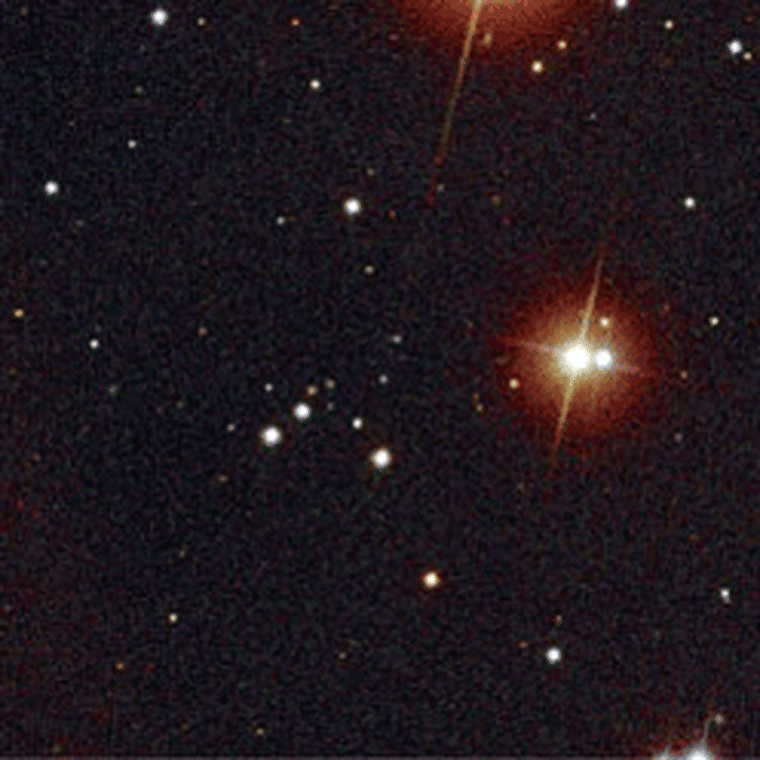Earlier this year, astronomers witnessed for the first time the final death throes of an aged and collapsing star as it spewed high-energy light beams into space before exploding as a supernova.
The first analyses of that remarkable event, conducted by four different research teams and detailed in Thursday's issue of the journal Nature, provides the strongest evidence yet that supernovas and the brilliant but mysterious energy flare-ups known as gamma-ray bursts, or GRBs, might be linked.
Astronomers have traditionally thought that GRBs form when matter from a swirling disk falls onto a black hole.
"Some of the rotation and magnetic field of the black hole somehow gets transformed into [gamma-ray] jets," explained Timothy Young, an astronomer at the University of North Dakota who was not involved in the studies.
But the detection of GRB 060218, a gamma ray burst observed by NASA's Swift Telescope in February, strongly suggest that the energetic flare-ups might also be associated with certain types of supernovae.
Possible hybrid
Analyses of GRB 060218 revealed it showed traits common to both GRBs and supernovae. It had the twin jetlike streams of material shooting out in opposite directions characteristic of GRBs but also a not-quite spherical shockwave typical of supernovae.
Also like classical supernovas, GRB 060218 dimmed before brightening again. Scientists think the extra luminescence occurs when radioactive nickel-56 created in the initial supernova explosion decays to cobalt-56—this reheats the material, causing it to glow at optical frequencies.
GRB 060218 differs from other known GRBs, however, in that the burst lasted much longer than normal. GRBs typically last from a few milliseconds to tens of seconds, but this one lasted about 33 minutes. It was also about 100 times less energetic than typical GRBs, releasing a comparatively modest 10 million billion times the output of the sun throughout its entire duration. Other GRBs have been known to outshine whole galaxies, releasing in a few seconds more energy than the sun during its entire lifetime.
Because it was less bright and did not produce as many gamma-rays as other GRBs, scientists refer to GRB 060218 as a mild type of GRB known as an X-ray flash.
Astronomers also think the star that created GRB 060218 was on the lower end of the mass spectrum compared to most stars that go supernova. Astronomers think it was a so-called Type 1C supernova, which form when ancient stars that are devoid of helium and hydrogen explode. Astronomers estimate that before it exploded, the star had a mass of about 20 times that of the Sun.
Uncertain fate
The star's low mass means astronomers are unsure about what its ultimate fate was after it exploded. Twenty solar masses is generally believed to be the minimum requirement needed for a star to become a black hole after exploding as a supernova. A research team led by Elena Pian at the INAF Astronomical Observatory of Trieste, Italy, thinks GRB 060218 was right at this lower limit, and thus may have produced a highly magnetic version of a dense, city-sized neutron star instead.
Slideshow 12 photos
Month in Space: January 2014
"It's an interesting result whether it's a neutron star or a black hole," said Alex Filippenko, a researcher at the University of California at Berkeley who was involved in the analyses. "Because massive stars are hard to form, there may be many more supernovae like this producing X-ray flashes than explosions of very massive stars to produce gamma-ray bursts."
GRB 060218 occurred in a star-forming galaxy about 440 million light-years away towards the constellation Aries, making it the second-closest GRB ever detected. The closest was GRB 980425, which went off 140 million light-years away.
The closest supernova ever detected was SN 1987A, which went off about 165,000 light-years away in the Large Magellanic Cloud, a nearby dwarf galaxy.
SN 1987A is one of the best studied supernovae to date, but even so, astronomers missed the very initial stages of the explosion.
"Someone saw [SN 1987A] in the sky and they turned their telescopes towards it," Young said. "So the light from the supernova had already arrived."
But with GRB 060218, astronomers got their first glimpse of the full evolution of a star's death, something that could prove invaluable for deciphering the mechanism behind both gamma-ray bursts and supernovae.
"This object showed both the gamma-ray signature and the supernova signature. This is going to spawn a whole bunch of papers on what the connection between the two is. It's really getting close to the actual mechanism of how these stars explode" Young said. "This is what astronomers dream of having — data like this."
An earlier version of this report misstated where GRB 060218 ranked among gamma-ray bursts and supernovae.

